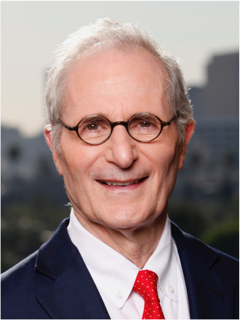Microtia Surgery Revision Can Improve the Results of a Past Surgery
 Ear reconstruction is a unique specialty, and because microtia is a rare condition, only a small number of doctors perform this procedure on a regular basis. Unfortunately, surgical inexperience often produces unsatisfactory results for microtia patients. Dr. John Reinisch specializes in ear reconstruction, and he has years of experience pioneering new techniques in the field. In addition to performing many surgical procedures for first-time patients, he also performs a number of microtia surgery revision procedures at our Beverly Hills practice. If you or your child has had previous microtia surgery, and you are unhappy with the results, contact Dr. Reinisch to learn how he can restore your appearance using the advanced MEDPOR® technique.
Ear reconstruction is a unique specialty, and because microtia is a rare condition, only a small number of doctors perform this procedure on a regular basis. Unfortunately, surgical inexperience often produces unsatisfactory results for microtia patients. Dr. John Reinisch specializes in ear reconstruction, and he has years of experience pioneering new techniques in the field. In addition to performing many surgical procedures for first-time patients, he also performs a number of microtia surgery revision procedures at our Beverly Hills practice. If you or your child has had previous microtia surgery, and you are unhappy with the results, contact Dr. Reinisch to learn how he can restore your appearance using the advanced MEDPOR® technique.
Rib Cartilage Reconstruction Concerns
Rib cartilage reconstruction was the first type of microtia surgery to be developed. Although it can yield excellent results, there are a number of risks associated with the technique that are not present in MEDPOR® surgeries.
For example, many microtia patients who undergo rib cartilage reconstruction do not feel that their new ear closely resembles their unaffected ear. The skin may look different, and as they grow, they may find that their ear is disproportionately sized or that it sits too close to their head. In addition, because the ear is created from rib cartilage and surgically implanted into the skin, it may not successfully integrate with the surrounding tissue. Once rib cartilage is removed, it no longer receives direct blood flow from its natural source. Instead, it receives peripheral blood flow from the edges of the skin pocket it is implanted into. Occasionally, scar tissue blocks the necessary blood flow, causing the skin and the underlying ear structure to die.
Correcting Past Procedures with MEDPOR®
Performed by an experienced surgeon, the negative effects of rib cartilage reconstruction are quite rare. However, when patients come to our Beverly Hills microtia surgeon's office for microtia surgery revision, they usually want the most advanced and risk-free procedure available. Dr. Reinisch pioneered the innovative MEDPOR® technique and introduced it in 1991. Over the last twenty years, it has become the most trusted and advanced surgical treatment for microtia. During the reconstructive procedure, Dr. Reinisch uses biocompatible polyethylene to create a new ear structure that matches the patient’s healthy ear. Next, he will attach it outside the skin and then perform a skin graft, typically using skin from the back of the patient's head, to cover the polyethylene structure.
Treatment Benefits
Because polyethylene is porous, it integrates easily with surrounding tissue and blood vessels, meaning the body will accept the new ear. In addition, because the ear is attached outside the skin, it is easier to place at the proper angle, so patients will not have to worry about a separate ear pinning surgery later down the road. And for children who undergo the procedure, Dr. Reinisch can make the new ear slightly larger so it will be proportionate when they are fully grown.
Learn More at Our Practice
If you or your child has had microtia surgery and are disappointed with the outcome, Dr. Reinisch may be able to revise your previous treatment. Contact him today to learn more about the MEDPOR® technique and whether it is a good option for your surgical revision.


